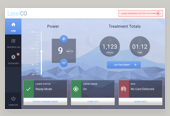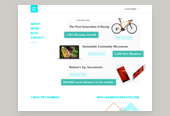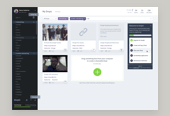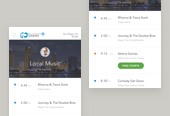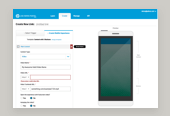If you’re in a product design or strategy role, this article should help you to hone in on who to work with and how to charge them fairly. This applies to those that have made the switch from a simple user interface design role to one who provides product design services.
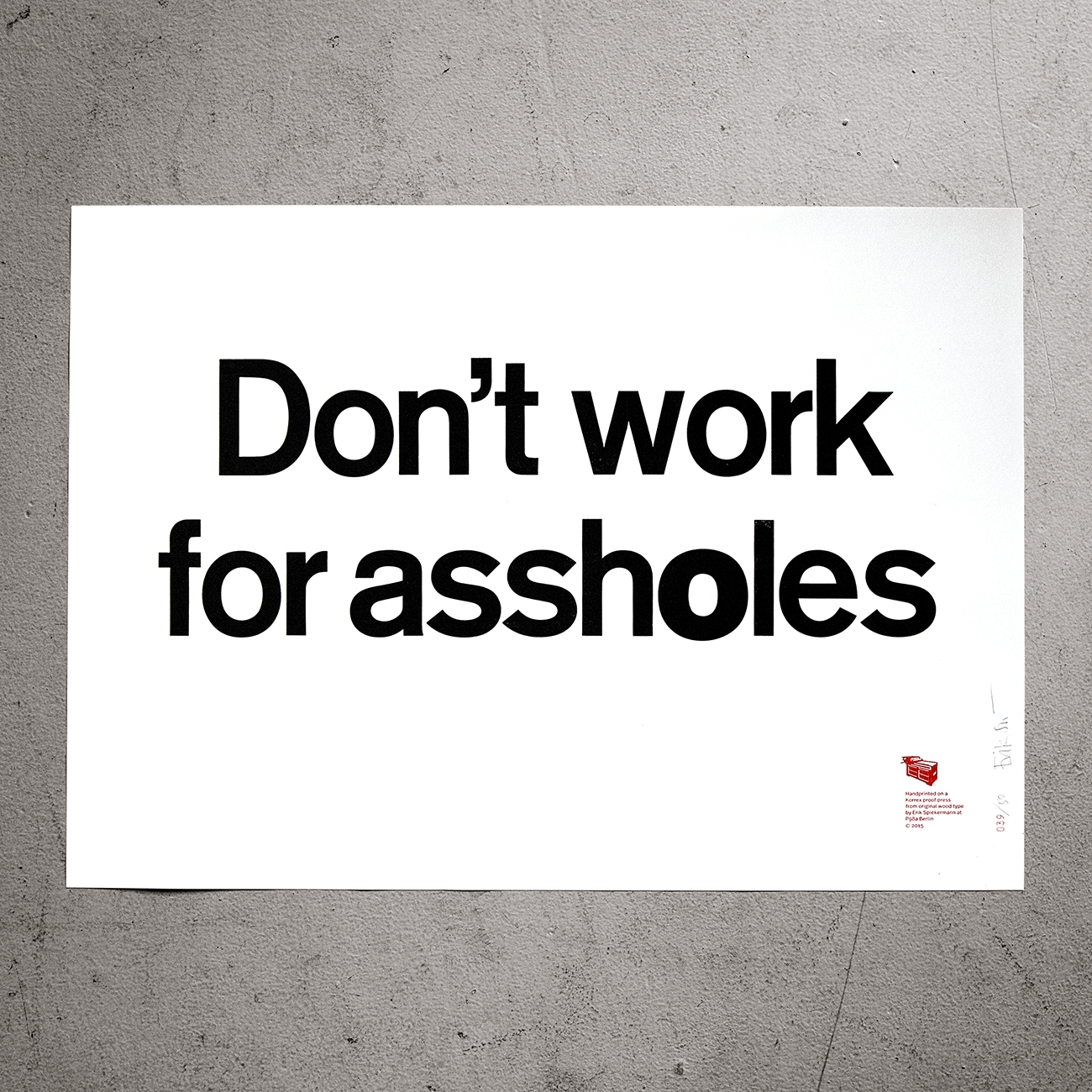
Letterpress poster by Erik Spiekermann – website.
Choose the Right Clients
Be Selective & Say No
Who is your ideal client? If you don’t know this, you cannot begin to be selective in building your client base. Define your ideal client, write it down, and craft this into a user persona. Print it out and stick it on your wall. Always be looking for this ideal client and always be testing your potential clients against this ideal persona.
Simply and politely turn away those clients that don’t align with your ideals. Go with your gut here. We’ve all made the mistake of signing a new client or project just for a paycheck before. This rarely feels like a smart decision in hindsight.
When a client comes to you looking for some pretty paint slapped onto whatever they already have built, it’s time for you to pass. That is to say, if someone comes to you with exactly what they need completed design-wise, move on.
Work with clients that will pay for access to your extensive industry experience and expertise to tell them what is needed and why.
Make the shift from taking every client that sends you an email and be selective in who you choose to partner with. This will allow you to own the niche of the work that fullfills you. This is generally where you can provide the most value to your selected clients anyways. Win win.
Craft your portfolio with detailed case studies of the work that you want to do more of. You are the professional here, so level up and don’t just settle for what you can get. Instead, define and pursue what it is you want.
Seek Transparent Partnerships
Find (and hold on to) those clients that will collaborate with you from the beginning of an engagement. Nothing can substitute the knowledge your client has surrounding her problem. It’s your job to ask the right questions and facilitate the conversations that will bring the best solution to light through creative thinking.
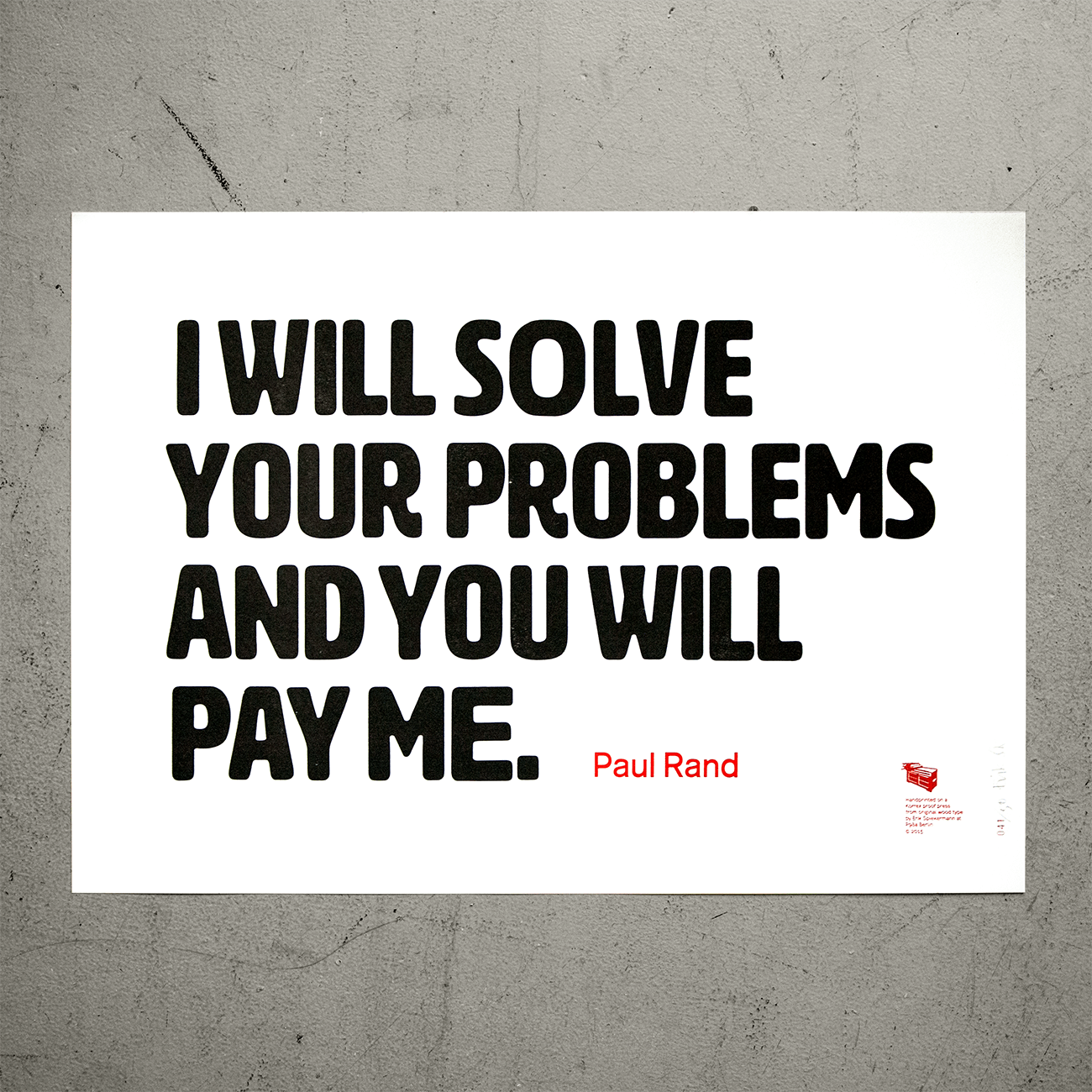
Letterpress poster by Anthony Burrill – website.
The ideal client relationship is collaborative and transparent in the sense that each party feels comfortable pinging the other anytime with a new idea, question or concern. I’ve found real-time communication tools like Slack channels and Skype to be hugely helpful in promoting that important, inclusive feeling between partners.
Basecamp (2) is another great, simple tool to comfortably keep all parties on the same page. This type of transparency not only puts your clients at ease, it gives them more insight into how your problem solving process works and unfolds through discussions, to-do lists and iterative rounds of revisions.
No matter how pretty your work it is, if it doesn’t solve your clients core business problems and speak to their needs, she won’t be back. Period.
Charge Clients Right
Know Your Worth
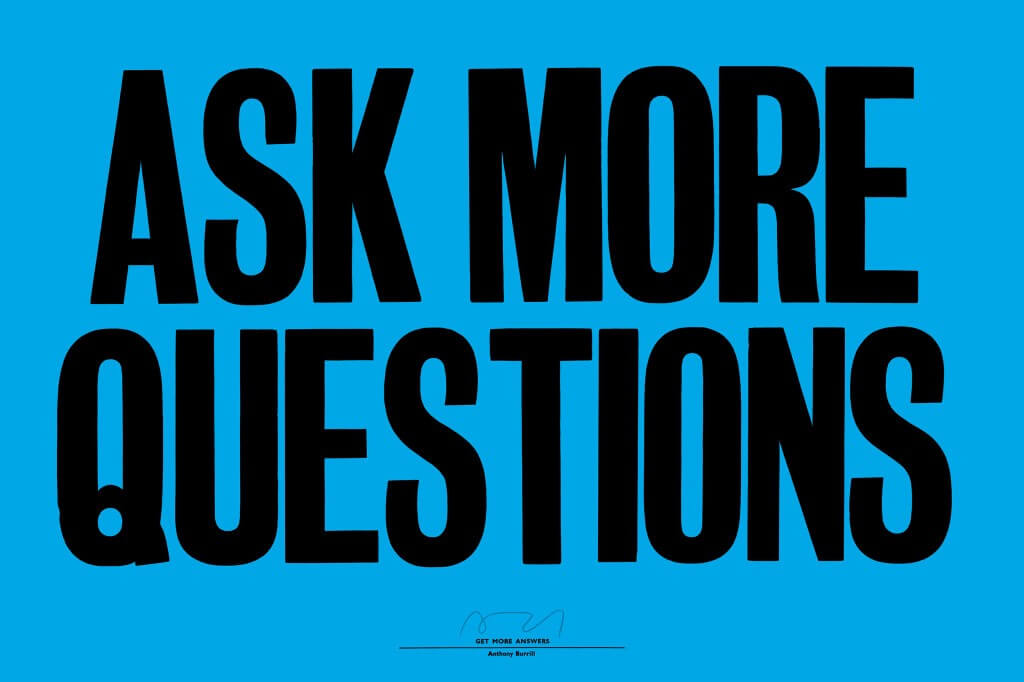
Letterpress poster by Erik Spiekermann – website.
Know what you are worth, and make your clients pay for it. This is another opportunity to weed out low-quality clients that are not the right fit for you. Product design and design thinking is not only a highly sought after skillset but has the potential to bring huge monetary value your clients company.
Value Based Pricing This is something that I’ll be writing more in-depth about in the future, but if you’re still charging hourly for your product design work, you’re doing it wrong. Value based pricing can seem daunting at first, but it’s the best tool we have to reinforce the inherent value of our work. Hourly has it’s place, but that place is not in the design thinking or product design arena.
If you’re still charging hourly for your product design work, you’re doing it wrong.
You need to uncover the value that you will be providing to your client. This takes place through asking the right questions and delving into their problems. It’s not about the dollar amount, it’s about the value you will be bringing to their business. If your goal is to maximize the value you are providing to your client, while also producing great quality work, you’re ready for value based pricing.
If you’re still only comfortable with hourly pricing model, please at least be confident that it’s a livable rate for your situation and reflects the going rates in our industry. There are many solid, transparent resources available online to help you gauge if you’re charging enough. These rates may be quite a bit higher than what you think.
If a client balks at your hourly rate, they’re the wrong client. Move on. Don’t devalue your worth (and the larger worth of our industry) by charging less. No promises of future or larger projects on the horizon should entice you to deviate from this. When’s the last time you heard of a lawyer discounting her rate to entice a client? Nope. Neither should you.
Published by: Ray in Best Practices, Clients, Personal, Product Design, Thoughts
